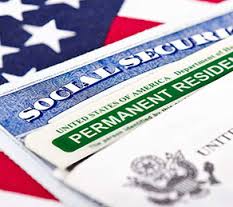Immigration News & Updates eNewsletter
eNewsletter
POSTING DATE: FEBRUARY 6, 2017
Learn More About:
Immigration News & Updates eNewsletter © 2011 - 2017
For questions about U.S. Residency, Green Cards and Immigration Visas, Visit our Website at: www.ImmigrateToday.com or call our office at: (954) 382-5378
Check Out This Cool Stuff For Immigrants....
Immigration
Questions & Answers
Question: Hi I am a green card holder can I file for my 4 children, 2 under age 18 and 1 is age 20 and one is age 25?
This Week's Immigration News
Government Temporarily Resumes Processing Immigration Petitions For Muslim Nationals Affected By Trump’s Executive Order
As reported by The Intercept, the Department of State (Embassies, U.S. Consulates), National Visa Center and Department of Homeland Security were ordered by the Trump Administration to stop processing all Immigration petitions filed by nationals from the seven countries in Trumps Executive Order: Syria, Iraq, Iran, Somalia, Yemen, Sudan, and Libya.
Then, pursuant to a Federal Judge's order late last week putting a "hold" on Trump's ban, the same agencies were ordered to resume processing cases. However, the ban could be reinstated soon, depending upon the outcome of the hearing to be scheduled on the matter in the coming days, stay tuned....
Answer: Yes, as a Green Card holder (U.S. Resident), you can file for your minor children (under age 21), in the F2A Immigration Category and your adult SINGLE children in the F2B Immigration Category. The waiting line for residency for minor children (F2A) is about 1 ½ years, so any of your children age 19 or younger will likely be able to immigrate in the next few years, unless they are married or get married before immigrating. The waiting time for adult, single children (F2B) is about 7 – 8 years, so your 20 and 25 year old children will have to wait quite a few years more before being able to immigrate.
Also, please make sure your adult children understand that if they marry, the Immigrant Visa petition will automatically be cancelled, unless you have naturalized before your child marries. You can learn more about Immigrant waiting lines by clicking on the link below:
Trump Draft Executive Order Targets Employment & Investment Visa Programs
Helpful Immigration Tips You Can Use
Overview of Conditional Residency
For Spouses of U.S. Citizens
The foreign spouse of a U.S. Citizen who has been married for less than two years at the time of obtaining residency, only receives a two-year Conditional Resident status.
Unlike regular U.S. Residents who obtain a Green Card through family members, employment or other means, husbands and wives of U.S. Citizens who got married less than two years prior to U.S. Residency approval, only receive a two-year Green Card, rather than the full 10 year Permanent Residency. In order to qualify for removal, the foreign and U.S. Citizen spouses must file a request for removal of the conditional status (Form I-751) within the 90 day period prior to the conditional Green Card expiration.
Policy Changes Could Make Living Abroad More Difficult For U.S. Residents
As life would have it, sometimes, even after waiting many years for an Immigrant Visa, immigrating to the U.S. to live here permanently appears difficult or impossible, due to family circumstances. This is often the case for single adult children of U.S. Citizens who are sponsored by a parent, wait 7+ years in the visa line, but who have a fiancée and perhaps even children abroad that they cannot be separated from.
In these cases the sponsored child usually goes through the Immigration process, enters the U.S. to receive his or her Green Card, then returns home abroad and only comes back to the U.S. for brief visits to keep his or her U.S. Residency status. Sometimes the new Immigrant then marries and sponsors his or her spouse and children, but the waiting line is 1 ½ years or more, a long time to be separated from loved ones.
Read the official USCIS and State Department Notice:
Federal Judge Order halting Trump Ban:
Trump Administration diretive to Agencies prior to judge's order (excerpts of the directive):
While many Immigrants, Americans and Nations around the world are still reeling from Trump’s ill-conceived and badly executed executive action against Muslim nationals of certain countries, causing chaos and havoc for thousands of travelers stuck in transit and detained by U.S. border officials, yet another proposed Immigration related Executive Order has been leaked to the press.
Under the terms of the draft order, called “Executive Order on Protecting American Jobs and Workers by Strengthening the Integrity of Foreign Worker Visa Programs”, the Trump administration will review the current employment-based immigration programs, including the H1-B, L-1, E-2, J-1 and F-1 student (OPT/CPT work) visa programs.
While short on details, among other things, the order seems to indicate that changes may be made to the current H-1B program for professional workers in “specialty occupations” (like engineers working in the tech industry), including further restricting visas to certain professional fields or occupations and increasing H-1B employee eligibility requirements, based on an undefined ”merit-based system”.
Similarly, the proposal calls for reforming the E-2 Treaty Investor visa system which may result in the restriction of the type of businesses or increased investments amounts which would be required under the program. The order also calls for performing site visits for all approved L-1 worker visas.
The draft order also targets the Practical Training (OPT) and Curricular Practical Training (CPT) work permit programs for graduated F-1 students, which may be eliminated or curtailed. The draft similarly proposes changes which may restrict or reduce visas for the Exchange Visitor (J-1) work-and study- programs.The proposal would further likely eliminate the dual Visa Bulletin instituted in 2015 by the Obama administration which allows certain Immigrants in lawful immigration status in the U.S. to adjust status to Residency early.
As feared, this is yet another signal that big changes could be coming for all areas of immigration. However, it’s likely that any policy changes will be for future applicants and may not affect those who are currently hold the employment or investment visa status. For instance, if the H-1B visa becomes restricted to only certain “specialty occupations”, those who are currently holding H-1B visas, who would not qualify under the new policy, would not lose their current visa, and would likely be allowed to continue working until the visa ends, but would not be able to renew it.
I’d like to note that I always advise international students to concentrate their education in STEM (Science, Technology, Engineering and Math) fields, since those are occupations that are in high demand and may not have enough U.S. workers to fill them. And these are likely the fields which will receive the most consideration in future Trump policy changes, to keep our IT industry going. But other college degree programs in liberal arts, media, graphic design, general business, etc, may no longer be eligible for U.S. work visas in the future and will mean that international student graduates with such degrees may have few or no work opportunities in the U.S. after graduation and would have no other choice but to return home.
Read Trump’s Draft Executive Order from the Washington Post:
Another common circumstance involves parents of U.S. Citizens who don’t really want to live in the U.S., but want the freedom to be able to stay in the U.S. for extended periods to visit their children if desired, never intending to permanently reside here, since other family and all their friends live abroad. Currently, U.S. Residents living abroad can get away with visiting a few times per year, but it may become much tougher in the future. Policy changes could likely result in stricter scrutiny by U.S. Immigration officials at the border, forcing Green Card holders to make a tough choice, live or spend more time in the U.S. or risk losing U.S. Residency.
So, with more challenging Immigration restrictions on the horizon, now might be a good time to start contemplating the future and what that could mean for your Immigration status. One might want to consider is that obtaining Residency in the U.S. could become more difficult in the future, for instance, family Immigration categories like those for Siblings (sisters & brothers) could be eliminated and numbers of overall Immigrant visas in all family categories could be cut, causing waiting lines to nearly double. And while not meaning to be “apocalyptic”, it’s quite easy to see now how drastic changes can be made in one moment, with the stroke of an Executive pen. So take this as some friendly advice to start thinking about a tough subject that often gets put off for the future… when the future always comes much faster than we think….
In order to qualify for removal of the conditional status, a couple must continue to not only be married, but to live together as a husband and wife. The removal of condition request must be submitted with extensive supporting documentary evidence that the couple has and continues to live together in a real marriage. One of the biggest misconceptions that conditional residents have is the belief that as long as they remain “married” to the U.S. Citizen spouse, but not actually living together, they will still qualify result in tragic consequences which often leads to loss of Residency and in some instances, deportation.
Conditional Residents can file a removal request without the U.S. Citizen spouse in cases where the couple has divorced, where there is documented domestic violence and when a spouse is widowed. However, the burden of proof is on the conditional resident spouse to provide the USCIS with extensive evidence that prior to the divorce, domestic violence or death of the U.S. Citizen, the couple were living together in a real marriage.
Immigration How To:
What Happens If I Failed To Register For Selective Service When Required To?
Selective Service Late Registration And Naturalization Eligibility
Men who live in the U.S. or who get a green card at any time between the ages of 18 and 26, are required to register with the U.S. Selective Service System, to be called up in a military draft if ever needed. Those exempt include men between 18 and 26 who were only here in a nonimmigrant visa status, like tourists, students, etc. Strangely, undocumented or illegal aliens are required to register. The issue of Selective Service Registration generally comes up for Immigrants who apply for Naturalization and are required to list their Selective Service Registration information. And since failing to register for Selective Service can result in Naturalization denial for failure to show good moral character, it’s a very important issue for those to whom it applies.
For some, it’s not too late to register: Men preparing to apply for Naturalization (U.S. Citizenship) who failed to register for the Selective Service in the past, but who are not yet age 26, can still register online. However, those who have passed age 26, are not eligible to register and must face the potentially negative immigration consequences of passing the required registration date. For those who failed to register, the easiest thing to do may be to wait until you are age 31 to apply for Naturalization so you have five years of good moral character or 29 years of age to show three years of good moral character (if you have been married to and living with a U.S. citizen).
If you don’t want to wait, you will need to prove to the officer that you did not know you were supposed to register and that you didn’t “willfully” fail to register. To do this, you can submit the following along with your naturalization application:
1) Status Information Letter from the Selective Service System (obtained from the Selective Service System website or by calling 847-688-6888.)
2) your sworn declaration, and sworn declarations from people who knew you, attesting to the reasons why you failed to learn about and did not know about the requirement to register or believed you were automatically registered.












